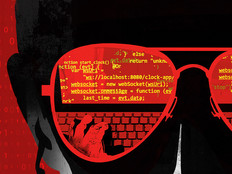Emerging Technology Trends In Local Government
Local governments deployed a whirlwind of new tech in 2017, including chatbots, the cloud and artificial intelligence, in order to make internal IT operations more efficient. Meanwhile, smart city initiatives brought connected technologies onto the streets in cities, towns, counties and states across the country.
But when it comes to local government IT innovation and spending over the last year, the greatest surprise is that there weren’t very many surprises at all, says Alan Shark, executive director and CEO of the Public Technology Institute.
“What we’ve seen is that local governments are doing better financially, the tax base is picking up since the recession, but IT spending has not increased. There seems to be a shyness to pick up spending,” says Shark, noting that this has led to frustrations in local government IT, as many IT leaders recognize the need to replace legacy equipment but are slow to plan aggressively for upgrades.
As we head into 2018, will this shyness begin to subside and result in an increase in IT investment? It may, says Shark, particularly as the cost of technology is dropping in many cases, but it will need to be accompanied by more robust justifications for IT upgrades and clear analysis on the return on investment for new tech.
“In many cases, if you look longer term, technology can save money, not just time, but it takes a savvy CIO to be able to show how that works,” says Shark.
So, what technologies are bound to break the mold and grab the attention of state and local CIOs over the next year? These four technology trends could do just that.
SIGN UP: Get more news from the StateTech newsletter in your inbox every two weeks
1. Cybersecurity Leads Local Government IT Spending
As we reflect on a year that saw WannaCry, Petya and several ransomware and hacking attacks on local governments, it’s no surprise that 2018 is shaping up to be filled with public sector cybersecurity investments. Nor is it a surprise that, for the fifth year in a row, security and risk management made it to the top of the National Association of State CIO’s annual list of top 10 technology and policy trends.
“Many local governments are at severe risk because the world has become more dangerous and we in local governments haven’t kept up with these threats as much as we should have. That might cause people to spend a bit more because they can justify it to a taxpaying public,” says Shark.
An uptick in cybersecurity spending will likely accompany this realization, but there will also likely be a change in the way that agency and department IT teams build cyberdefenses.
“What began last year and is continuing to evolve is the move away from a perimeter-based defense, which is based on just building up firewalls, to a holistic active monitoring and response system,” says Shark, noting that there has been an uptick in the number of companies releasing active monitoring software, which spot anomalies more quickly and accurately than a human can.
Better backup systems are also likely to be a worthwhile investment for local IT teams, particularly in the face of ransomware.
“Local governments, including public safety, have been particularly hit by ransomware. Now, we have better backup solutions, which means that if something is hacked, it leaves the teams with a current and unaffected backup that can allow operations to continue with little impact on productivity,” says Shark.
2. The Cloud Continues to Improve Local Government IT
State and local governments began to adopt the cloud in a big way in 2017, thanks largely to their involvement in the Federal Risk and Authorization Management Program, which “provides a standardized approach to security assessment, authorization and continuous monitoring for cloud products and services.” This offered local governments a security blanket in working with vendors to adopt the technology.
States such as Arizona chose to go all-in with the cloud last year, and we can only expect more cloud migrations this year as others follow suit.
“The use of cloud is definitely going to grow,” says Shark.
What might change, however, as staffing challenges and issues with legacy systems persist, is the terminology surrounding cloud services.
“Cloud is a somewhat overused term and so I see us moving away from the term itself and calling it what it is: managed services. Whether it’s infrastructure or services, it’s outsourcing responsibility to another entity,” says Shark.
3. Blockchain Remains on the Horizon for the Public Sector
Blockchain holds huge promise for governments, offering accountability and transparency for IT services, among other services. But while a few blockchain pioneers have launched pilots at the state and local level, it’s a territory that remains largely uncharted, mainly because, despite interest, the solutions for local governments don’t yet exist.
Using blockchain for database management, however, could be a particularly applicable solution for local governments once cost-effective blockchain solutions begin to emerge.
“Today, with collaboration, it’s hard to control versions or access,” says Shark, which can hit accountability for local governments pretty hard. “With blockchain, for databases, you have a much better way of protecting the integrity of data.”
4. Hyperconverged Infrastructure Offers Faster, More Efficient IT
If you’re looking for a dark horse in technology trends that will transform local government IT in the coming year, look no further than hyperconverged infrastructure. Hyperconvergence combines computer, storage, network and virtualization onto a single platform from a single vendor, which cuts back on the complexities of a multivendor environment, offering local governments less expensive, easier to manage and more scalable IT infrastructures.
Already, the infrastructure is transforming local governments on a smaller scale. The Louisiana Department of Health deployed Dell and Nutanix hyperconverged infrastructure last year in both of its data centers, modifying its IT infrastructure and adding flexibility and scalability into its systems alongside sizeable cost savings.
“If there’s one thing that will change IT for the public sector in the coming year, it’s hyperconverged infrastructure,” says Shark. “Hyperconvergence does it all with a hardware, software solution all in one. Now, suddenly, your mainframe can sit there in a fraction of the space and perform faster, better, with mirror backups built in. This will be a game changer because, ultimately, it requires less energy, less hardware, takes up less space and is far more efficient.”









